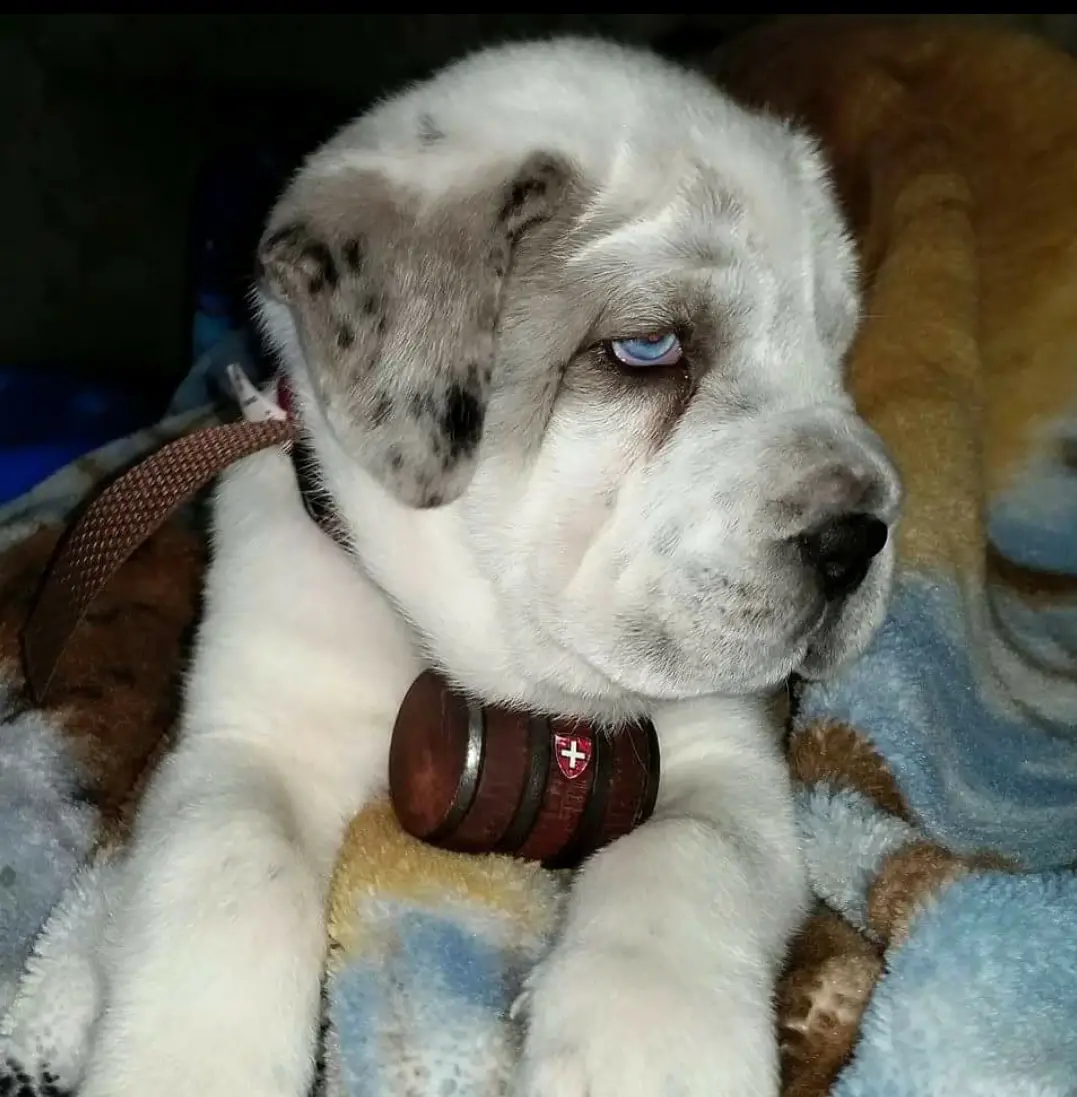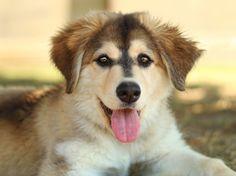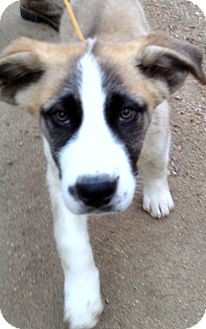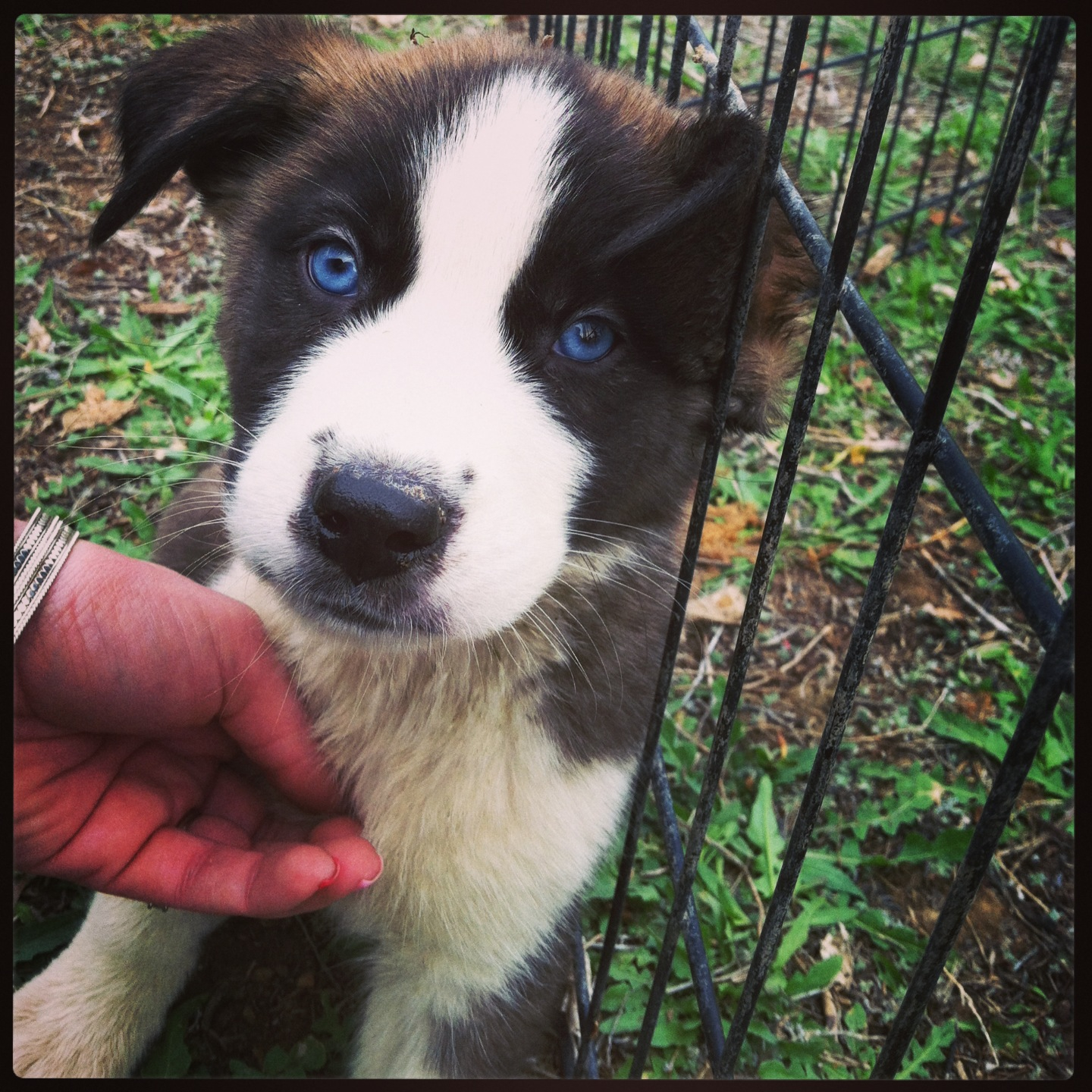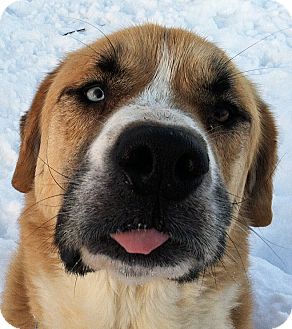Saint Bernard Husky Mix
The Saint Bernard Husky Mix, is a hybrid mix breed dog created by breeding the Saint Bernard and the Siberian Husky. This is a cross between two larger, arctic breed dogs. It will probably be rather friendly, with longer hair and shed a lot. However, it is always hard to tell what a mixed breed dog will be like, but if you continue reading below we will dive into this hybrid deeper. Continue reading below to see pictures, videos, and learn more about the beautiful Saint Bernard Husky Mix.
While we really recommend that you acquire all animals through a rescue, we understand that some people might go through a breeder to get their Husky Saint Bernard puppy. That is, if they have any for sale. Always screen your breeders as much as possible to ensure that you are getting as high a quality dog as is possible.
If you are interested in helping animal rescues raise money, please play our quiz. Each correct answer donates to help feed shelter animals.
Here are some pictures of the Saint Bernard Husky Mix
Saint Bernard Husky Mix History
As mentioned above, all hybrid or designer dogs are tough to get a good read on as there isn’t much history to them. Breeding specific dogs like this has become common in the last twenty years or so. A lot of times the breeding of two dogs such as these is just done to make something very unique and to make a quick buck, completely regardless of what the offspring might be like or have to endure. If you are looking at breeders for new, designer dogs please beware of Puppy Mills and those who breed dogs for money. These are places that mass produce puppies, specifically for profit and don’t care at all about the dogs. Please sign our petition to stop puppy mills. We will take a closer look at the history of both parent breeds below.
The Siberian Husky is a medium size working dog breed that originated in north-eastern Siberia, Russia. The breed belongs to the Spitz genetic family and was originally bred to pull sleds over long distances rather quickly. They are known to be escape artists that will dig themselves out of the strongest fence. Being that they were bred to pull things you can imagine that they aren’t the easiest dogs to walk.
The Saint Bernard is a very old breed of dog descending primarily from the French Alps. The ancestors of the St. Bernard have a similar history and background with the Sennenhunds. The St. Bernard is also referred to as an Alpine Mountain Dog or Alpine Cattle Dog, these were the large farm dogs of the farmers and dairymen of most notably the French Alps, livestock guardians, herding dogs, and draft dogs as well as hunting dogs, search and rescue dogs, and watchdogs. They are thought to be descendants of large breed dogs brought into the Alps by the ancient Romans.
The earliest written records of the St. Bernard breed come from monks that were living and working at a hospice at the Great St. Bernard Pass in 1707. However, paintings and drawings of the dog date back even earlier than that. There was a famous Saint Bernard, named Barry (sometimes spelled Berry), who reportedly saved somewhere between 40 and 100 lives as a search and rescue dog. There is a monument to Barry in the Cimetière des Chiens, and his body was preserved in the Natural History Museum in Berne. Another famous dog was Rutor, the faithful companion of the priest fr:Pierre Chanoux named after the peak Tête du Rutor located above the Little St Bernard pass. The classic St. Bernard looked very different from the St. Bernard of today because of cross-breeding. Severe winters from 1816 to 1818 led to increased numbers of avalanches, killing many of the dogs used for breeding while they were performing rescues. After their dwindling numbers there was an attempt to preserve the breed, the remaining St. Bernards were crossed with Newfoundlands brought from the Colony of Newfoundland in the 1850s. The Newfoundland wasn’t the best breed of dog for intense search and rescue work as their long hair would freeze and weigh them down.
The Monks trained the younger dogs for search and rescue work by letting the younger dogs watch and learn from the older dogs. The Swiss St. Bernard Club was founded in Basel on 15 March 1884. The St. Bernard was the very first breed entered into the Swiss Stud Book in 1884, and the breed standard was finally approved in 1888. Since then, the breed has been a Swiss national dog. The dogs at the St Bernard hospice were working dogs that were smaller than today's show St Bernard's dogs. Originally about the size of a German Shepherd Dog. It makes sense that a little smaller dog would work better than a larger one. The St Bernard grew to the size of today's dog as kennel clubs and dog shows emphasized appearance over the dog's working ability.
Awesome videos of Saint Bernard Husky Mix puppies
Saint Bernard Husky Mix Size and Weight
Saint Bernard
Height: 28 - 35 inches at the shoulder
Weight: 140 - 1260 lb.
Lifespan: 8-10 years
HUSKY
Height: 20 - 23 inches at the shoulder
Weight: 35 - 60 lb.
Lifespan: 12-15 years
Saint Bernard Husky Mix Personality
Trying to predict the personality traits of hybrid dog isn’t always that easy to do. Sometimes the mix takes more from one of the parent breeds than the other. However, the Saint Bernard Husky mix will more than likely be very friendly, loveable, with a can-do work attitude. This will be a mildly higher energy dog that will thrive best in colder climates. The best thing you can do for any puppy or young dog is to socialize it as well as possible. This can’t be stressed enough as socialization is extremely important.
Saint Bernard Husky Mix Health
All dogs have the potential to develop genetic health problems as all breeds are susceptible to some things more than others. However, the one positive thing about getting a puppy is that you can avoid this as much as possible. A breeder should absolutely offer a health guarantee on puppies. If they won’t do this, then look no more and don’t consider that breeder at all. A reputable breeder will be honest and open about health problems in the breed and the incidence with which they occur. Health clearances prove that a dog has been tested for and cleared of a particular condition.
Do not purchase a puppy from a breeder who cannot provide you with written documentation that the parents were cleared of health problems that affect the breed. A careful breeder and one who truly cares about the breed itself, screens their breeding dogs for genetic disease and breed only the healthiest and best-looking specimens. One of the most common health problems with dogs is obesity. Keeping this under control is your responsibility.
Saint Bernard Husky Mix Care
Like I have stated a couple of times, this mix is going to have a higher energy level and need to be with someone who isn’t a couch potato and that will want to walk and exercise the dog. Get ready to invest in a good vacuum if you want to keep your floors clean! Give them baths as needed, but not so much that you dry out their skin. Never tie your dog up outside - that is inhumane and not fair to him. The Husky can be a great escape artist so if left in the backyard (temporarily of course,) they will be tough to keep in. You will need to make sure the fence is extremely secure and buried a couple of feet in the ground. Plan on taking them for extremely long walks and hikes to keep their energy level down. A tired dog is a good dog.
Saint Bernard Husky Mix Feeding
A lot of times diet is done on a per-dog basis. Each one is unique and has different dietary requirements. Most dogs in the U.S. are overweight. A mix like this one that is prone to hip and elbow dysplasia should really be on fish oil and glucosamine and chondroitin supplements as soon as possible. Overfeeding any dog is not a good idea as that can really exacerbate health problems such as elbow and hip dysplasia.
A good diet to look into is Raw Food Diet. A raw food diet will be especially good for the Wolf background.

